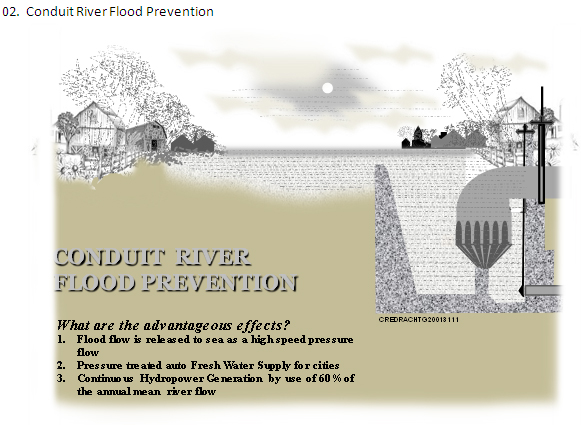Billions of the world population lives on unsuitable low lands reclaimed from flood plains. That is obviously as a result of urbanization and due to scarcity of suitable lands for housing facilities, to tally with the exponential growth of human population.
Thousands die per year due to floods but no methodology or technology in the so far developed background art, to solve the problem, rather than constructing huge dykes on both bank sides of rivers. That is also not a good solution because it creates additional problems moreover such as difficulty to drain inland water to the river.
It could be observed in several countries, that rivers are straightened as a flood prevention strategy but the natural scenic beauty of a river has disappeared. Also river beds are sank down badly due to increased bed erosion as a result.
Billions of money is wasted every year all over the world by the name of ‘Flood Prevention’ through researches, feasibilities, monitoring and modeling but the problems remain unsolved because such far academic approaches through GIS and geo-hydro graphics lead only for identification of flood plains and planning alarming networks for the people to withdraw from dangerous areas.
The invention ‘Conduit-River Technique for Flood Prevention and Energy Production’ introduced hereby, is a more practicable, engineering solution for the problem by which, the additional flood stock is released through a buried conduit for hydropower generation at an on-beach power plant.
One of the river functions such as fisheries, water supply, transportation etc. or the pleasant appearance of a natural river is disturbed due to this technique because the conduit is buried along a bank of the river. Also all the cities that come across the river path can be provided with pressure/gravity treated drinking water without any electrical energy consumption, as the biggest advantageous effect.

